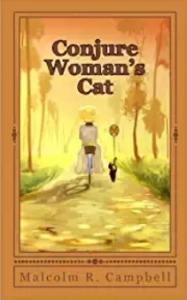Malcolm R. Campbell's Blog, page 2
February 9, 2025
‘Cowboy Artist Charlie Russell and Glacier National Park’ by David R. Butler
“What’s the matter with packing your war bag and heading to my camp?
A robe is spread and the pipe lit for you always.” – Charles M. Russell – https://cmrussell.org/
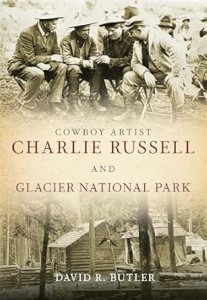 “Explores Charlie and Nancy Russell’s two-decade connection with Glacier National Park, showcasing his art, influential visitors, and landscape changes over time.
“Explores Charlie and Nancy Russell’s two-decade connection with Glacier National Park, showcasing his art, influential visitors, and landscape changes over time.
“Cowboy Artist Charlie Russell and Glacier National Park examines the intimate relationship artist Charlie Russell, and his wife, Nancy Russell, had with Glacier National Park for over twenty years in the early 1900s. At Bull Head Lodge, their Apgar summer home on Lake McDonald, Charlie Russell painted and sculpted, producing some of his most famous works, including major works illustrating Glacier National Park. The Russells also entertained numerous important figures in the art and literary worlds during their summers in the park, and these individuals and their relationships with the Russells are examined. The book also describes park excursions undertaken by Charlie and Nancy Russell designed to support tourism growth as well as to encourage sales of Charlie’s art.
“Numerous examples of Charlie’s art are presented in the book, and photographs of the Bull Head Lodge area as well as the park excursions are supplemented by modern photos. These modern photos, taken by the author, illustrate landscape changes that have occurred in the park over the 100-year period since the Russells were among the most significant celebrities to ever call Glacier National Park home.”
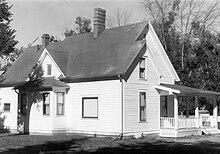 Russell’s original wood-frame home, in its new location in September 1976.
Russell’s original wood-frame home, in its new location in September 1976.I have come to appreciate the work of Charlie Russell throughout my forty-year membership in the Montana Historical Society–with access to its books, collections, and scholarly articles in “Montana The Magazine of Western History.” From that background, I think that Butler has written a detailed, lavishly illustrated biography that covers Russell’s work, wife, associates, and influence on the Park from his home base in the Apgar community on Lake McDonald.
I highly recommend the book for those beginning their trek through Russell’s world.
‘Cowboy Artist Charlie Russell and Glacier National Park ‘ by David R. Butler
“What’s the matter with packing your war bag and heading to my camp?
A robe is spread and the pipe lit for you always.” – Charles M. Russell – https://cmrussell.org/
 “Explores Charlie and Nancy Russell’s two-decade connection with Glacier National Park, showcasing his art, influential visitors, and landscape changes over time.
“Explores Charlie and Nancy Russell’s two-decade connection with Glacier National Park, showcasing his art, influential visitors, and landscape changes over time.
“Cowboy Artist Charlie Russell and Glacier National Park examines the intimate relationship artist Charlie Russell, and his wife, Nancy Russell, had with Glacier National Park for over twenty years in the early 1900s. At Bull Head Lodge, their Apgar summer home on Lake McDonald, Charlie Russell painted and sculpted, producing some of his most famous works, including major works illustrating Glacier National Park. The Russells also entertained numerous important figures in the art and literary worlds during their summers in the park, and these individuals and their relationships with the Russells are examined. The book also describes park excursions undertaken by Charlie and Nancy Russell designed to support tourism growth as well as to encourage sales of Charlie’s art.
“Numerous examples of Charlie’s art are presented in the book, and photographs of the Bull Head Lodge area as well as the park excursions are supplemented by modern photos. These modern photos, taken by the author, illustrate landscape changes that have occurred in the park over the 100-year period since the Russells were among the most significant celebrities to ever call Glacier National Park home.”
 Russell’s original wood-frame home, in its new location in September 1976.
Russell’s original wood-frame home, in its new location in September 1976.I have come to appreciate the work of Charlie Russell throughout my forty-year membership in the Montana Historical Society–with access to its books, collections, and scholarly articles in “Montana The Magazine of Western History.” From that background, I think that Butler has written a detailed, lavishly illustrated biography that covers Russell’s work, wife, associates, and influence on the Park from his home base in the Apgar community on Lake McDonald.
I highly recommend the book for those beginning their trek through Russell’s world.
January 27, 2025
You can’t go home again
“You can’t go back home to your family, back home to your childhood … back home to a young man’s dreams of glory and of fame … back home to places in the country, back home to the old forms and systems of things which once seemed everlasting, but which are changing all the time – back home to the escapes of Time and Memory.”- Thomas Wolfe
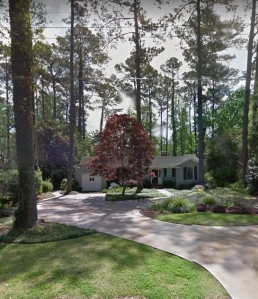 Fans of the Hallmark series “The Way Home” see time-traveling characters talking about whether they can change the past and whether going there is an addiction that keeps them from living in the present. I like the series and the fact that it suggests to some of us that we can’t go home again and need to stop trying to do so.
Fans of the Hallmark series “The Way Home” see time-traveling characters talking about whether they can change the past and whether going there is an addiction that keeps them from living in the present. I like the series and the fact that it suggests to some of us that we can’t go home again and need to stop trying to do so.
Our family lived in this Tallahassee, Florida house from the 1950s through the 1980s. The first thing I notice when I Google the address is the ugly driveway that takes up a fair amount of the front yard. From pictures posted by a subsequent owner, I notice that the kitchen and dining room have been combined in an attempt to make the home modern; one of the kitchen windows has been covered over.
A look at neighborhood maps confirms what I worried about when I was young: the wonderful woods behind the house have been turned into an upscale neighborhood. The homes look expensive and less desirable than the woods where we played.
All of our former neighbors have moved away. My 1954 Chevy no longer sits in front of the garage door. In fact, the room is no longer a garage, but an office. The memories remain even though the changes to the house obscure the past to those of us who once lived there. I resent the changes to the house because they don’t fit a late 1940s home.
Now you see why I can’t go home again: home is no longer there. Even the huge azalea and camelia bushes have been torn out.
January 23, 2025
‘The Women,’ by Kristin Hannah
“Hannah’s tale, rich with period detail, is an impassioned tribute to the heroism of the many thousands who did serve, as well as a hymn to female solidarity in the darkest of settings. It’s a surprisingly original take on a well-trodden subject.” ―The Times (London)
From the Publisher “Women can be heroes. When twenty-year-old nursing student Frances “Frankie” McGrath hears these words, it is a revelation. Raised in the sun-drenched, idyllic world of Southern California and sheltered by her conservative parents, she has always prided herself on doing the right thing. But in 1965, the world is changing, and she suddenly dares to imagine a different future for herself. When her brother ships out to serve in Vietnam, she joins the Army Nurse Corps and follows his path.
“Women can be heroes. When twenty-year-old nursing student Frances “Frankie” McGrath hears these words, it is a revelation. Raised in the sun-drenched, idyllic world of Southern California and sheltered by her conservative parents, she has always prided herself on doing the right thing. But in 1965, the world is changing, and she suddenly dares to imagine a different future for herself. When her brother ships out to serve in Vietnam, she joins the Army Nurse Corps and follows his path.
“As green and inexperienced as the men sent to Vietnam to fight, Frankie is over-whelmed by the chaos and destruction of war. Each day is a gamble of life and death, hope and betrayal; friendships run deep and can be shattered in an instant. In war, she meets―and becomes one of―the lucky, the brave, the broken, and the lost. “But war is just the beginning for Frankie and her veteran friends. The real battle lies in coming home to a changed and divided America, to angry protesters, and to a country that wants to forget Vietnam.
“But war is just the beginning for Frankie and her veteran friends. The real battle lies in coming home to a changed and divided America, to angry protesters, and to a country that wants to forget Vietnam.
“The Women is the story of one woman gone to war, but it shines a light on all women who put themselves in harm’s way and whose sacrifice and commitment to their country has too often been forgotten. A novel about deep friendships and bold patriotism, The Women is a richly drawn story with a memorable heroine whose idealism and courage under fire will come to define an era.”
–
“One of the greatest storytellers of our time, Kristin Hannah, tackles one of the most cruel and despicable wars of the last century, the Vietnam War. The Women reveals the powerful contributions and horrific sacrifices of the American military nurses who served in a war whose agencies refused to acknowledge that they were even there. Perhaps no words can bring closure to a nation still ashamed of booing our returning heroes, but the heroine, Frances McGrath, stirs a deep, overdue compassion and tears for every single soldier―and especially the forgotten women who sacrificed so much. Never has a novel of war metamorphosed so profoundly into a story of the human heart.” ―Delia Owens, author of Where the Crawdads Sing
-Malcolm
January 20, 2025
When I was a kid, people often asked what I’d wish for if a genie said he’d grant three wishes
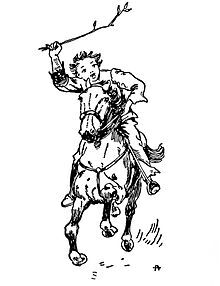 If wishes were horses, beggars would ride.
If wishes were horses, beggars would ride.
Even as children, we knew being and/or appearing greedy was unseemly. This meant that the first of those three wishes had to be:
I wish for world peace.
Next, we’d add something everyone else in the neighborhood had gotten for Christmas or a birthday. Like:
I wish for a new Schwinn Sting-Ray bike in flamboyant lime
Since the powers that be said it was illegal to use the third wish to ask for three more wishes, a lot of us tacked on something to help the family:
I wish Grandpa would get off the sauce.
Those of us who read fantasy fiction were careful about the kind of genie we’d ask to meet our wants and needs. Otherwise, even the most carefully worded wish would contain a hideous catch. Hence the pastime of making up and spreading genie jokes.
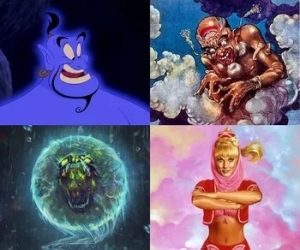 Here are several from James Martin’s page:
Here are several from James Martin’s page:
And those are the sanitized examples.
We usually heard the beggars would ride quote when parents, ministers, stand-up comics, and other authority figures hear us wishing for things they thought we should work for: (e.g., I wish I had good grades). Work for it? How lame is that?
[image error]Long before “The Secret” was published, I read a bunch of magic books that said I could manifest stuff with my thoughts. There there are two catches. (1) You have to truly believe the mainfestation will happen. (2) If you manifested $10000000 into your bank account or a new Rolls Royce into your garage, you’d have to explain to the IRS where you got it.
Working for it is easier than wishing for it, or so it seems.
–Malcolm
January 14, 2025
President Biden establishes Chuckwalla National Monument, expanding the largest protected landscape in the lower 48 states
NPCA News Release
January 7, 2025
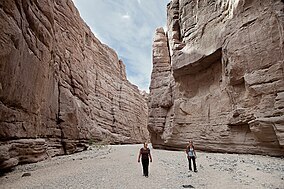 Mecca Hills, part of the Chuckwalla Natl. Monument
Mecca Hills, part of the Chuckwalla Natl. Monument
WASHINGTON– Today, President Biden established Chuckwalla National Monument, protecting over 600,000 acres of public lands in the California desert. The National Parks Conservation Association (NPCA) joins the Protect California Deserts coalition and partners in celebrating this historic designation, decades-in-the-making.
Named after the iconic Chuckwalla lizard, this remarkable landscape bridges the gap between Joshua Tree National Park and the Colorado River, protecting critical wildlife habitat, connecting migration corridors and preserving centuries of cultural history.
“Chuckwalla National Monument is a cornerstone in a vast network of protected landscapes across the Southwest. Stretching from Joshua Tree to the Grand Canyon to Bears Ears, this corridor forms the largest swath of protected lands in the continental U.S.,” said Theresa Pierno, President and CEO for the National Parks Conservation Association. “This designation protects an extraordinary stretch of the California desert, preserving a landscape shaped by millennia for those who find inspiration in the timeless beauty of our national parks.”
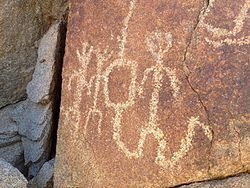 Petroglyphs at Corn Springs
Petroglyphs at Corn Springs
Chuckwalla National Monument is part of the Biden administration’s legacy of landscape conservation. By connecting protected lands from Southern California to Utah, the monument becomes a keystone in the largest connected and protected landscape in the lower 48 states, covering nearly 18 million acres.
This corridor connects national parks, monuments, and protected public lands, including Joshua Tree, Grand Canyon, Capitol Reef, and Mojave National Preserve.
“This 18-million-acre corridor links the Mojave Desert to the Colorado Plateau, providing safe migration routes for wildlife like the iconic desert bighorn sheep and ensuring clean water flows through the Colorado River and its tributaries. It protects sacred sites central to Tribal nations for countless generations, and welcomes millions of visitors each year, inspiring exploration and bringing lasting economic strength to surrounding communities,” said Theresa Pierno. “NPCA has been proud to work locally and nationally for decades to preserve the extraordinary landscapes in the California desert and beyond.”
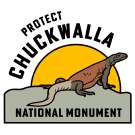 Designating Chuckwalla National Monument would honor Tribal sovereignty and protect a cultural landscape, boost the economy, and ensure access to nature for local residents.
Designating Chuckwalla National Monument would honor Tribal sovereignty and protect a cultural landscape, boost the economy, and ensure access to nature for local residents. A proposed Chuckwalla National Monument near Joshua Tree National Park would protect the threatened Mojave Desert tortoise and help many other species thrive, including people.
Chuckwalla is home to the desert’s most iconic and vulnerable species, including the Mojave Desert Tortoise, which relies on roughly 400,000 acres of protected habitat within the boundaries of the new national monument. The designation also ensures connectivity for wildlife migration, supporting desert bighorn sheep, golden eagles, burrowing owls, and more.
Luke Basulto, NPCA’s Ruth Hammett California desert program manager, has dedicated his career to desert conservation, working with local communities to protect the delicate desert landscapes.
“Growing up as a desert kid shaped me into the California desert advocate I am today, and I couldn’t be prouder to see Chuckwalla National Monument become a reality,” said Luke Basulto. “This landmark designation expands one largest desert preserves in the world, teeming with wildlife like the Mojave Desert Tortoise and bighorn sheep and is home to multiple plant species found nowhere else on the planet.”
Beloved destinations like Painted Canyon and the historic Bradshaw Trail will now be permanently protected, offering opportunities for hiking, camping, backcountry exploration, and stargazing. For nearby communities, where extreme heat and pollution pose daily challenges, the monument provides equitable access to the beauty and solace of the California desert.
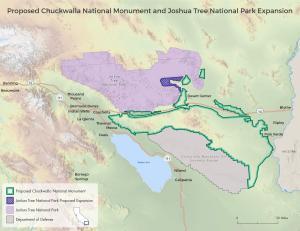 Audubon Map
Audubon Map
“For communities in the East Coachella Valley, Chuckwalla offers a place to visit, to connect with the desert landscape, and to find respite. Experiences like this are what build a passion for these special places,” said Luke Basulto. “Protecting this landscape isn’t just about today; it’s about creating a legacy of conservation that future generations can experience and connect with, just as I did.”
The area within Chuckwalla National Monument is sacred to several Tribes, including the Iviatim, Nüwü, Pipa Aha Macav, Kwatsáan, and Maara’yam peoples. These lands hold centuries of cultural and historical significance, preserving sacred sites, traditional practices, and historic trade routes.
While the designation of Chuckwalla National Monument is a monumental victory, the work to protect the California desert continues. Expanding Joshua Tree National Park to restore a key piece that was historically a part of the park area remains a vital next step for a more connected and resilient desert landscape. Congress now has an opportunity to ensure that Joshua Tree National Park is made whole once again.
–
Malcolm
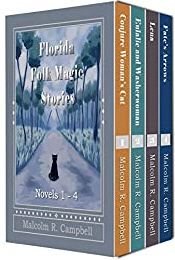 Four novels in one Kindle volume
Four novels in one Kindle volume
January 7, 2025
Twelfth Night Blessings
“Love sought is good, but giv’n unsought is better.”
― William Shakespeare, Twelfth Night
The play, my favorite from Shakespeare, was written in celebration of Twelfth Night
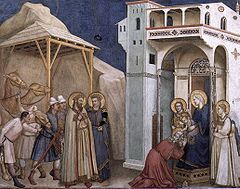 The Adoration of the Magi by Edward Burne-Jones
The Adoration of the Magi by Edward Burne-JonesTwelfth Night, January 5th, marks the ending of the Twelve Days of Christmas that begin on December 25th, the first day of Christmas. Twelfth Night is also called Epiphany Eve since it occurs the night before Epiphany (Three Kings Day which coincides with the visit of the three wise men).
I like the entire Yuletide season that begins with the solstice and runs through the twelve days because, in my beliefs, limiting the celebration to Christmas Day, would give me less time to absorb the beauty and the blessings of the holiday’s meanings and decorations. Each day brings new inspiration.
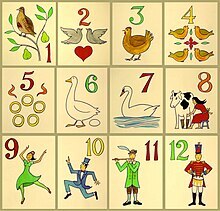
When my wife and I were first married, we often celebrated Christmas Day at her folks’ house an hour’s drive away. When we returned to your neighborhood before nightfall, a fair number of people in our subdivision had already finished their Christmas and thrown their trees out by the curb for the trash truck. I used to be furious with these people. Now, having improved with age, like a fine red wine (I hope), those trees make me sad.
Perhaps my focus on Yuletide from start to finish began with my parents’ Yule Log which sat on the mantle every season with three burning candles. Over time, the drippings built up and were a spectacular record of a wealth of Christmases. Likewise, over the Twelve Days of Christmas, the wealth of blessings builds up–even if your true love never gives you twelve drummers drumming.
–Malcolm
December 31, 2024
‘Path of the Panther: New Hope for Wild Florida’ by Carlton Ward Jr.
CBS news reports that “Three dozen endangered Florida panthers died this year, the most in nearly a decade, according to the state’s Fish and Wildlife Conservation Commission. It’s the most panther deaths since 2016, when 42 panthers were killed.”
 All the more reason to read this 2023 book, follow panther-related conservation organizations such as Wildpath, for FL residents purchase a protect the panther license plate, and keep up with news about Florida conservation efforts.
All the more reason to read this 2023 book, follow panther-related conservation organizations such as Wildpath, for FL residents purchase a protect the panther license plate, and keep up with news about Florida conservation efforts.
 “The panther is the state animal of Florida, the last big cat surviving east of the Mississippi River, and an emblem of the Endangered Species Act. It was driven to extinction in the eastern United States, except for a small remnant population that persisted in Florida’s Everglades. Panther numbers had dwindled to fewer than 20 individuals by the 1980s, but heroic conservation efforts have helped panthers come back to nearly 200 today. The biggest obstacle for the panther’s continued recovery is access to enough of its historic territory throughout Florida and beyond.
“The panther is the state animal of Florida, the last big cat surviving east of the Mississippi River, and an emblem of the Endangered Species Act. It was driven to extinction in the eastern United States, except for a small remnant population that persisted in Florida’s Everglades. Panther numbers had dwindled to fewer than 20 individuals by the 1980s, but heroic conservation efforts have helped panthers come back to nearly 200 today. The biggest obstacle for the panther’s continued recovery is access to enough of its historic territory throughout Florida and beyond.
“The tale of the Florida panther has grown from the unlikely survival of a rare cat to a story of hope for all of wild Florida. Path of the Panther in now a call to action to recognize and protect the Florida Wildlife Corridor – a network of public and private land that connects the panther’s current range in south Florida to suitable habitat throughout the state of Florida and adjoining states.
“The Florida Wildlife Corridor is the panther’s path to recovery and a western-scale conservation opportunity that remains largely hidden in the east. It is now as a Last Wild Places partnership with the National Geographic Society. With 27 percent of Florida already protected as public land, this project aims to inspire the additional one million acres of conservation needed over the next decade so that Florida can be a leader in the goal of protecting 30 percent of the planet by 2030.
“Photographer Carlton Ward helped put the Florida Wildlife Corridor on the map by trekking from the Everglades to Georgia in 2012 and from the Everglades Headwaters around the Gulf of Mexico to Alabama in 2015. Through these National Geographic–supported expeditions, he and his team have witnessed that a path for the panther’s recovery still exists. But with 1,000 new residents moving to Florida every day, and more than 100,000 acres of habitat lost to development each year, to window to save it is closing quickly. Through Ward’s intimate photographs, expert essays and compelling maps, the Path of the Panther book, combined with a National Geographic magazine article, National Geographic Society Last Wild Places campaign, and feature documentary film, is poised to awaken people to wild Florida and inspire them to save it.”
Happy New Year
–Malcolm
December 24, 2024
Blue Spruce – My Favorite Christmas Tree
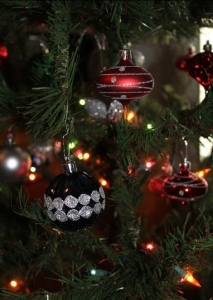
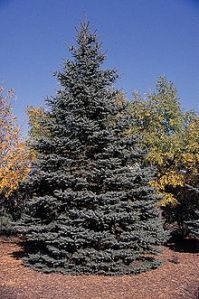 My parents favored spruce for their Christmas trees. Perhaps this came from my father’s family living for many years in Colorado where spruce trees grow. My wife and I have carried on the tradition. The branches and needles easily lend themselves to lights to strings of lights, ornaments, and icicles. Their scent fills the room and, as I think I wrote elsewhere, conjures up a near-living presence from the tree in the living room.
My parents favored spruce for their Christmas trees. Perhaps this came from my father’s family living for many years in Colorado where spruce trees grow. My wife and I have carried on the tradition. The branches and needles easily lend themselves to lights to strings of lights, ornaments, and icicles. Their scent fills the room and, as I think I wrote elsewhere, conjures up a near-living presence from the tree in the living room.
One year, my wife and I bought a live blue spruce with the seemingly one-ton root ball for our Georgia home. When we took down our decorations on January 6th, we planted the tree in a shady spot in the yard. To our surprise, it flourished there perhaps because I often sprayed it with water or because conditions were accidentally right many miles from its high country range.
When we moved away, the tree was taller than the house. I’ve often wondered if subsequent residents have wondered how a spruce was growing in a Georgia yard.
Now we use an artificial tree to save money. It’s a Spruce, of course.
–Malcolm
December 20, 2024
New National Monument Will Commemorate Dark Legacy of Native American Boarding Schools
NPCA News Release
December 10, 2024
 The Carlisle School
The Carlisle School
WASHINGTON – Yesterday, President Joe Biden designated the Carlisle Federal Indian Boarding School National Monument, a new national park site that tells the story of traumatic family separation and abuse at Native American boarding schools across the country.
President Biden’s proclamation states that this new national monument will be managed by the National Park Service in close consultation with Tribal Nations, so that Indian Country leaders will have the opportunity to shape planning processes, interpretation, and other critical factors in park management.
As the flagship Native American boarding school, the Carlisle School held thousands of Native children separated from their families, yet it represents just a small fraction of these stories.
The Biden administration’s hard work and careful collaboration with Tribal leaders on this sensitive issue recently culminated in a formal apology from the United States government regarding Native American boarding schools.
Statement of Theresa Pierno, National Parks Conservation Association President and CEO:
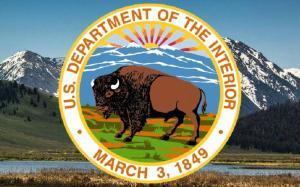 “Under the leadership of Secretary Deb Haaland, the Department of the Interior has made remarkable efforts to recognize the generational pain and trauma that Native American boarding schools inflicted on Indigenous people in the United States. Now, by designating the Carlisle Federal Indian Boarding School National Monument, the Biden administration is taking the next powerful step towards ensuring this painful history will never be erased from our collective memory. President Biden and Secretary Haaland are tasking the National Park Service with a new mission to commemorate this history and help generations to come learn from the mistakes of generations past. Crucially, NPS and Tribal communities will work in collaboration to ensure this monument will help heal these wounds.
“Under the leadership of Secretary Deb Haaland, the Department of the Interior has made remarkable efforts to recognize the generational pain and trauma that Native American boarding schools inflicted on Indigenous people in the United States. Now, by designating the Carlisle Federal Indian Boarding School National Monument, the Biden administration is taking the next powerful step towards ensuring this painful history will never be erased from our collective memory. President Biden and Secretary Haaland are tasking the National Park Service with a new mission to commemorate this history and help generations to come learn from the mistakes of generations past. Crucially, NPS and Tribal communities will work in collaboration to ensure this monument will help heal these wounds.
“We are grateful for Secretary Haaland, whose sensitivity and grace in navigating the dark legacy of these schools has helped chart a path forward to properly acknowledge their toll. As a country, we are deeply indebted to the many Native people who came forward to share the heavy emotional burden of stories of their communities’ experiences at these boarding schools.
“To protect and tell these painful stories will not be easy. The Carlisle School and other Native American boarding schools are rife with trauma, broken promises, and stolen families from hundreds of Tribal Nations. To properly interpret these stories will require deference and respect to Indian Country, including boarding school descendants, who will deservedly play a primary role in managing and interpreting their history. Their leadership is deeply needed to ensure that the stories at this park are handled with sensitivity and care. We believe this national park site is an excellent opportunity for the federal government to honor Tribal self-determination.
“We know that the hardworking staff of the National Park Service have proven themselves capable of telling complex, heartbreaking history with the dignity it deserves. The National Park Service has a chance to work hand in hand with Native people impacted by the horrors of these boarding schools, creating a lasting monument of learning and remembrance for all of us.”
–Wikipedia NoteThe United States Indian Industrial School in Carlisle, Pennsylvania, generally known as Carlisle Indian Industrial School, was the flagship Indian boarding school in the United States from its founding in 1879 through 1918. It was based in the historic Carlisle Barracks, which was transferred to the Department of Interior from the War Department for the purpose of establishing the school. More than 7,800 children from 140 Indian tribes were separated from their communities and sent to the school.
–Malcolm

